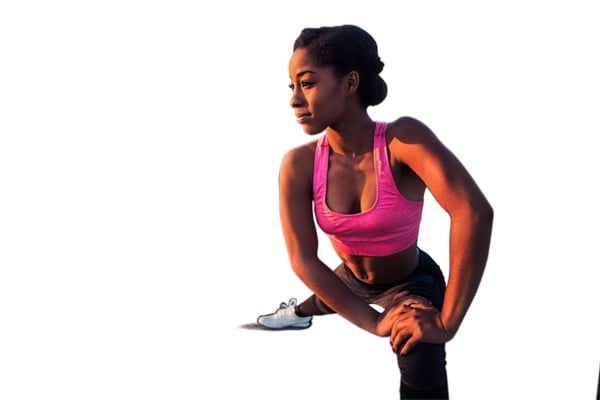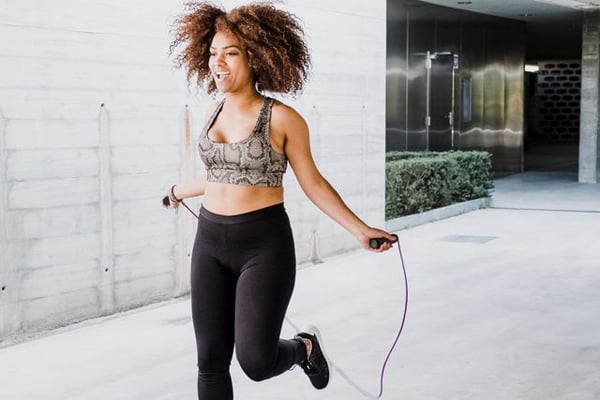Exercises for aching knees and hips

Always consult a doctor before starting any exercise regime. PHOTO/www.gettyimages.com
What you need to know:
- Your hips and knees should move, and when you sit around without exercising them, they can lock up, become tight, and result in discomfort. We discuss some exercises that you can engage in to control hip and knee pain.
There are times when your knees and/or hips ache, pain, or feel stiff. That does not necessarily spell doom. It simply means that your joints could do with a little more activity than you are currently giving them. Such instances are on the rise seeing that many people are working from home; moving from bed to desk, which could lead to discomfort as one moves or stands.
Our joints are meant to move and sitting for long hours causes them to feel tight owing to locking up thus the discomfort. When not dealt with, Edwin Muhereza, a fitness trainer, says chances are, the discomfort will lead to aches and pains.
“Exercising is important and can be done in the comfort of your home. The only vehicle here is determination, resilience and diligence,” he says.
Hip circles
If your hips are giving you grief, Muhereza says this workout will help ease the pain.
“Lie on your sides with your head propped up either by a pillow or your arm to ensure a straight line from the shoulder to the legs. Then raise your top leg, say the left, mid-air while laying on your right side, and rotate it to make full circular movements. Do this as much as your fitness levels allow, say five to 10 times for three sets. Then switch to lie on your left side and do the same,” he shares. Besides allowing your hips to feel better, Muhereza says the workout will, with time, tone your inner thigh muscles while also working the abs since the stomach area is used as a pivot when rotating the leg.
Forward leg raise
If you have not jogged or walked that much, chances are you will feel as though your knees are somewhat locked. One way to get relief is by engaging in forward leg raises.
“Lie flat on your back and use your elbows to hoist your upper body. Then lift your legs, one at a time, until you make a right angle with your body. Lower one leg, say your left, allowing it to remain suspended so as to achieve a straight body, then raise it again. Do this five to 10 times in sets of three depending on your fitness levels,” Ian Kato, a fitness trainer, shares. He adds that this workout also tones your thighs and abdominal muscles.
External hip stretch
The workout allows you to hit two birds with one stone because both hips and knees are catered for. Kato says it starts with one sitting while stretching their legs before them.
“Then bend one leg, say the right, towards your chest and lift it to cross over the left. This part of the workout caters to the knee. Thereafter, using your hand, push down the leg at the knee area to also stretch the hip. Hold that position for 10 seconds before letting go,” he shares. While you do this, ensure that you maintain a straight back.
Kneeling hip stretching
The workout will allow for ample hip stretching and is best done on a mat. “Kneeling on a mat using one knee while the other, say the left knee, is straight up, push your body forward alongside the left knee. As you do so, keep your hands at the waist area. Hold that position for 60 seconds before resuming the starting position,” Muhereza shares. Switch legs and do the workout for three sets for 10 cycles.
Standing hip flexing
This workout is one that will test your stability and balance as you exercise your knees and hips. Starting in an akimbo position, Kato says, raise one leg, say the left, with the knee folded to make a right angle.
“Then slowly rotate it to face sideways before lowering it to the ground and resuming the starting position. While rotating the leg, ensure you keep facing forward. Do this for 10 cycles before switching to the right leg for three sets,” he says.
Warm up first
You can ride a stationary bike for about five minutes, take a brisk two-minute walk while pumping your arms, or do 15-20 wall push-ups followed by the same number of calf raises. Doing this will help you get more out of your workout, prepare you to stretch, and lower your risk of an injury.
Is it safe for me to exercise?
Are you worried that working out could cause more knee damage or pain? As long as your doctor says it’s OK, the best thing you can do is to strengthen the muscles that support your knee and keep them flexible. Start slowly, and build up over time. Talk to your doctor about which specific exercises are good for you.





